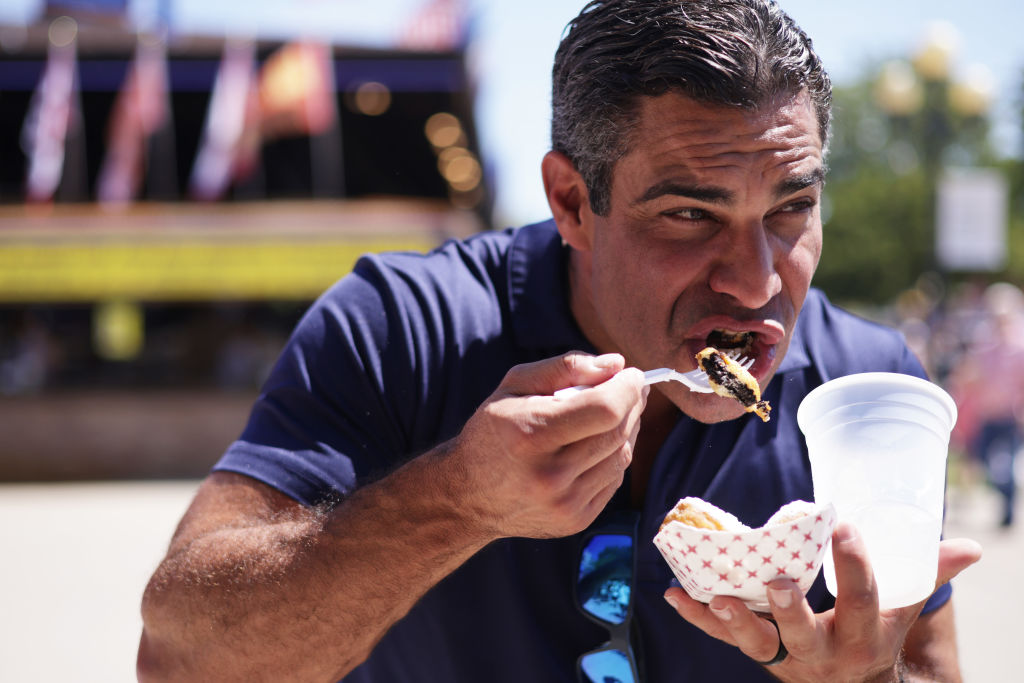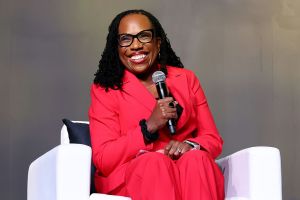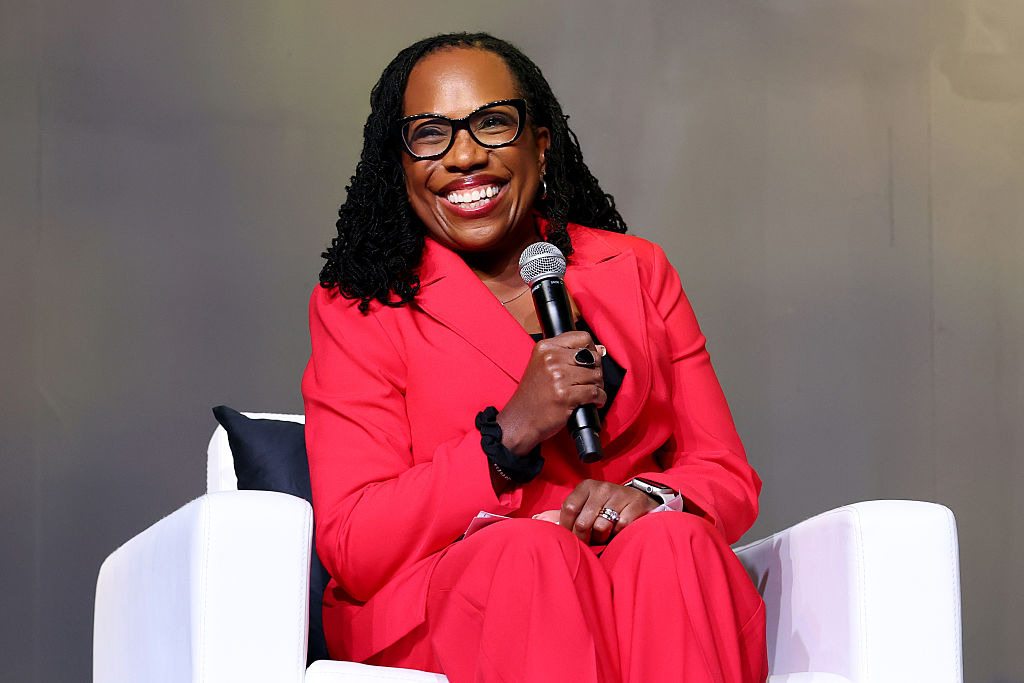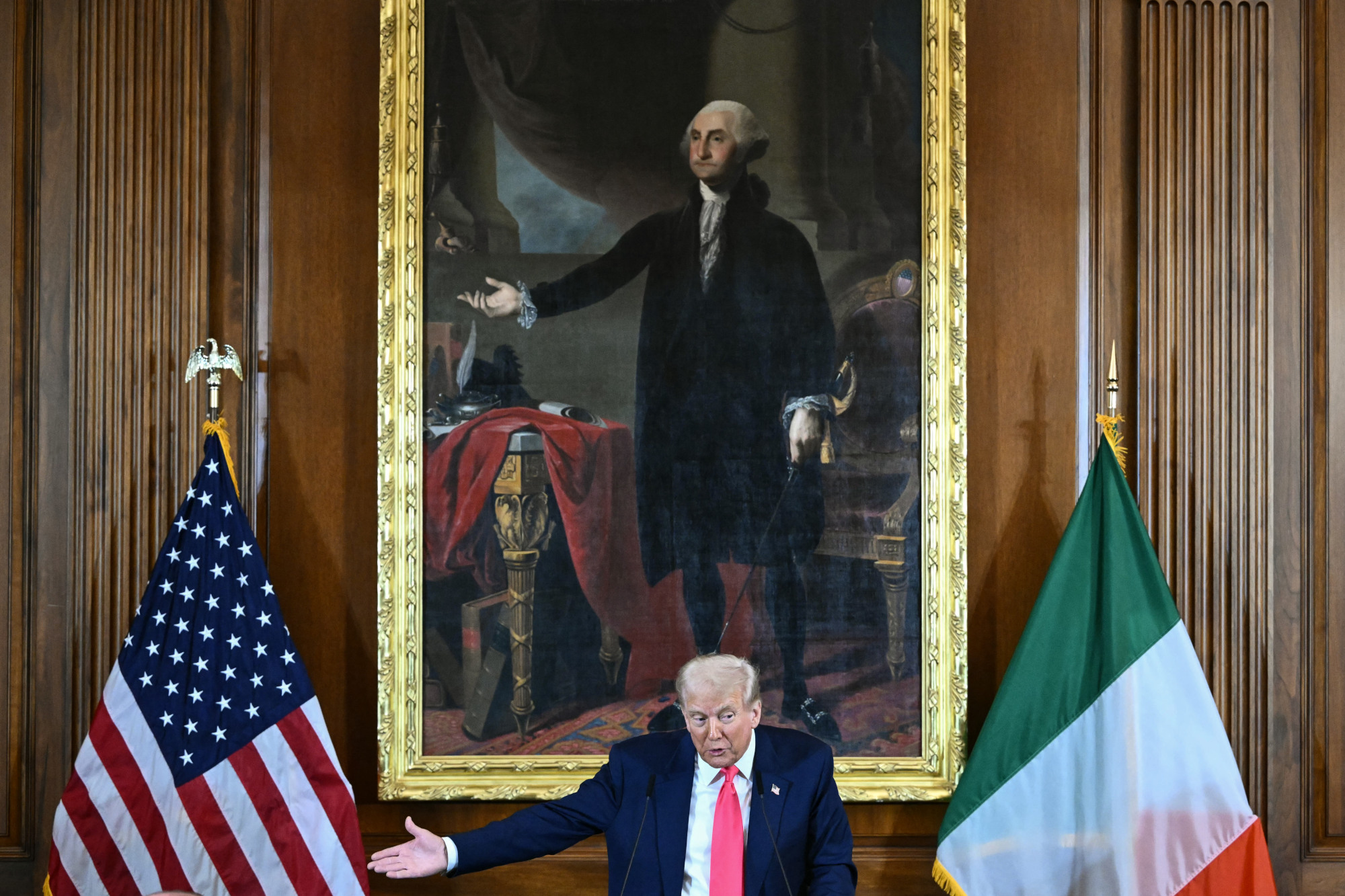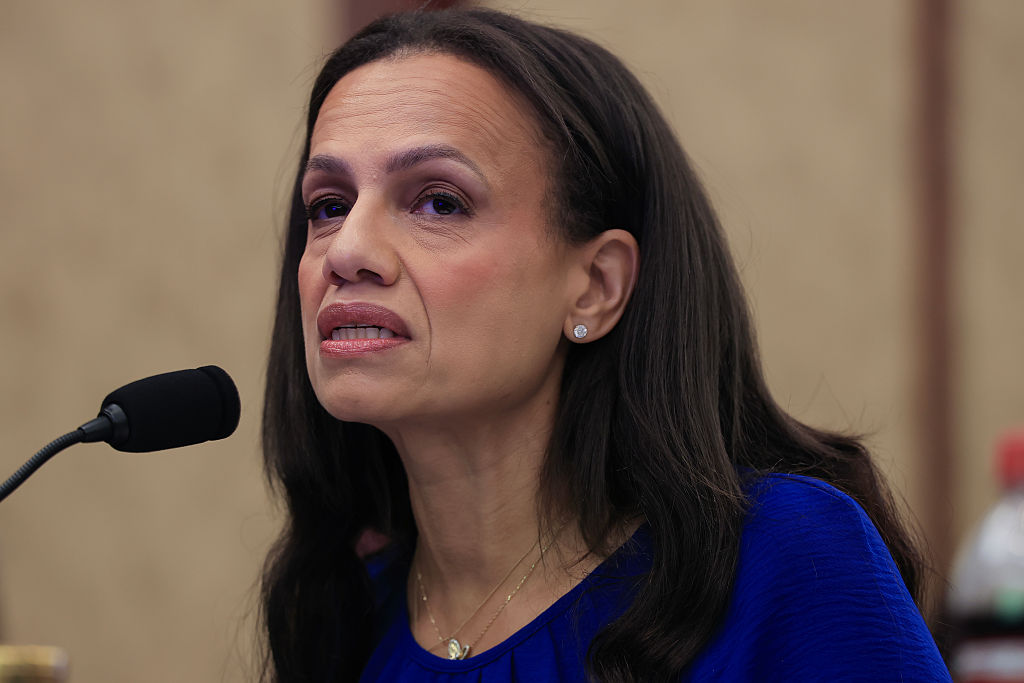Welcome to Thunderdome, where you should never let a crisis go to waste, and Donald Trump isn’t wasting any time bashing Ron DeSantis even in the midst of hurricane recovery efforts, hoping to stomp on what could be an opportunity to show off his good governance chops. The White House, meanwhile, is struggling not just with frustration over their delayed response to the Maui disaster and the president’s insistence on repeatedly telling his exaggerated anecdotes about a house fire, but also the anniversary of another, different kind of disaster: the withdrawal from Afghanistan, which brought Gold Star families to bear against the administration this week. The guys discuss all this and more on the latest Thunderdome podcast — listen and subscribe here today!
The GOP field is shrinking fast
A few months ago, the talk was that Republicans were anticipating a much bigger presidential field. Maryland’s Larry Hogan, New Hampshire’s Chris Sununu, former secretary of state Mike Pompeo, South Dakota’s Kristi Noem and Virginia’s Glenn Youngkin were all talked about as realistic potential candidates. Instead, Republicans ended up with a smaller field that’s already shrinking — and much faster than it did in 2016.
Miami mayor Francis X. Suarez became the first to suspend his campaign this week after failing to make the first debate stage. Former Arkansas governor Asa Hutchinson appears unlikely to make the second debate, to be moderated by Dana Perino and Stuart Varney at the Reagan Library in California. And as for Doug Burgum, the super PAC of the North Dakota governor who played hurt in the first debate is spending millions to try and get him to 3 percent in the national polls, or he’ll be out, too.
On its surface, this may not seem like anything significant. But consider the contrast with 2016. At this point in that contest, all seventeen candidates were still in the race — former Texas governor Rick Perry would be the first to drop out, followed by one-time favorite Wisconsin governor Scott Walker, both in the month of September. No one else would drop out for another two months. Even George Pataki stayed in the race through December!
The point is: in 2016, the number of hopeless also-rans stayed very high for a very long time, and the non-Trump GOP coalesced far too late to do anything to stop his nomination. This time around, the number of candidates with strong odds to make future debates and the resources to stay in the race may soon be reduced to as few as five. That doesn’t mean any of them can beat Trump. But it is a necessary preface to having any shot at beating him, or building off the momentum of January victories as the clear alternate choice.
Trump’s big 2024 problem: white voters?
Much as the Republican conversation coming out of 2020 has focused on growing the diversity of the GOP’s coalition by winning more Hispanic and Asian voters in particular, replacing losses among white college-educated voters with a broader coalition. But a major problem for them could be the losses experienced, particularly under a Trump nomination scenario, among their traditional white voting base. They can ill afford to see their margin shrink there, particularly because of down-ballot ramifications.
Yet that’s what one Republican firm found when looking at Trump’s current performance. National Review writes up the memo:
While Trump led Biden among white voters by seventeen percentage points in 2020 exit polls, he’s now leading Biden by an 8.8-point margin in recent polling, according to an analysis from Republican polling firm WPA Intelligence.
The analysis included a review of the six most recent polls featured on RealClearPolitics that had publicly available cross-tabs on race. Five of those polls showed Trump “well below his 2020 levels with whites and an average of all six polls revealed that he has lost nearly half of his lead over Biden among whites since 2020,” Bryon Allen, a partner with WPA Intelligence, told National Review in a statement.
Allen explained that Trump’s losses largely occurred among white college-educated voters, which he noted is consistent with trends that began in 2018, though there was also some erosion among white voters without degrees, he said.
“Barring some miracle or a third-party candidate that splinters the Democrats, if Trump is the nominee and is only nine points up against Biden with whites, he has little chance of winning the election,” he said. “It’s worth recalling that John McCain outperformed Barack Obama by twelve points with white voters in 2012 — and lost in a landslide.”
Will Joe Manchin jump in?
According to the Wall Street Journal, Joe Manchin and his daughter are currently engaged in a series of conversations with wealthy donors about both his future and the prospects of either a return to the Senate, or a potential run for president — perhaps on the ballot offerings of the No Labels effort. As they write: “Any third-party bid for president is unlikely to garner enough support to challenge the major parties. But with the last two presidential elections decided by tens of thousands of votes in key states, any alternative campaign could prove decisive.”
While Manchin loves to play the will-he, won’t-he game on all number of issues, the overall question in the minds of voters really ought to be no question at all. If the nominees are respectively the current president and the former president, there will be a major third-party candidate on the ballot, with a well-funded or self-funded campaign backed by donors tired of both Biden and Trump.
The incentives are just too strong for someone not to get in. With two historically disliked candidates, both saddled with serious legal challenges (including the possibility of a Republican impeachment for Biden by this time next year), there’s just too much of an audience for someone different.
This is not to say that person or ticket could win. But there will be a ticket. It just seems inconceivable on its face that the only alternative will be Cornel West and the Green Party. This is the type of contest that could attract a younger billionaire with a mind to win the center, and it will probably prove too hard to resist. Factor that into your electability equation, folks!
One more thing
Mitch McConnell’s second public freeze is a challenge for Washington Republicans, who don’t want to have to deal with these types of incidents in the news — played up by the media far more than everything John Fetterman or Dianne Feinstein does, for obvious reasons. One thing to keep in mind, though, is that McConnell could very well step down from leadership while staying in the Senate — effectively removing himself from the spotlight, but avoiding the challenge of a replacement by a Democratic Kentucky governor. While it’s true that the state legislature passed a law requiring Governor Andy Beshear to replace any vacant congressional seat with a member of the same party, speculation has mounted that the governor may just ignore the law and appoint whoever he wants, taking the issue to court. It’s entirely up to McConnell how and when he steps down from either leadership or the Senate, but the pressure to do so — thereby freeing up Republicans to make Joe Biden’s infirmities a dividing line in 2024 — is only going to grow.



